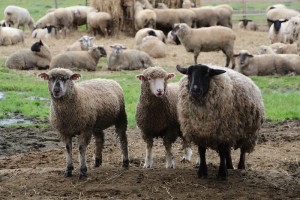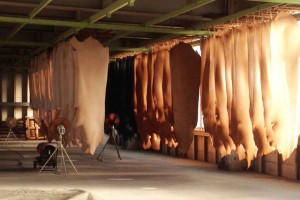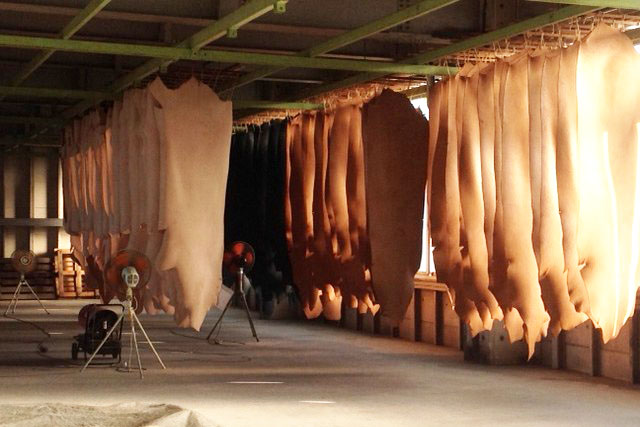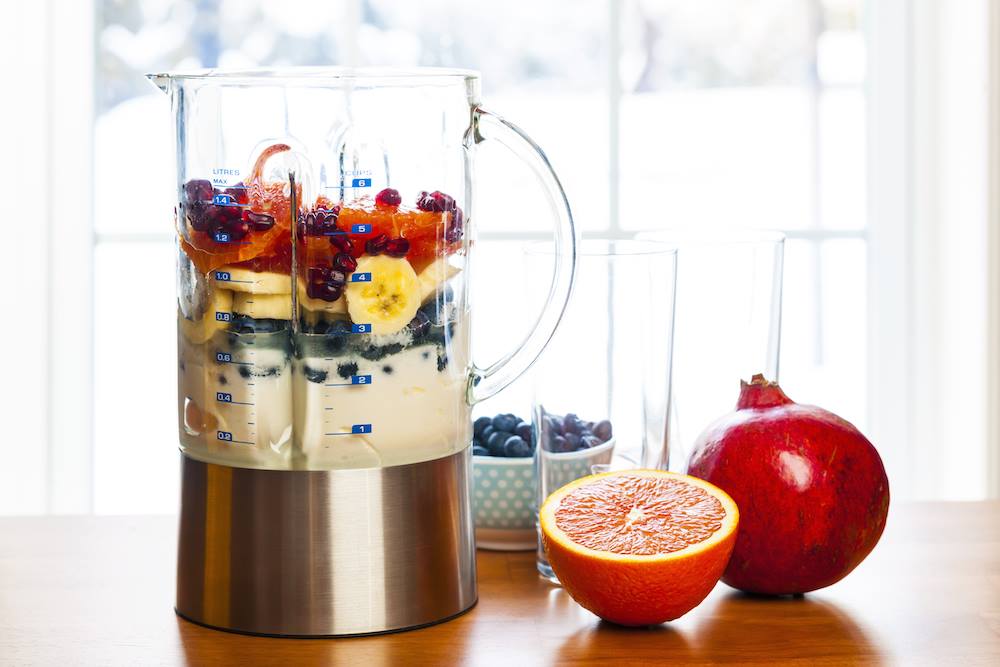Recently I found out that wool is actually a rare fiber in terms of overall fiber production. It occupies less than 2% of the entire fiber production. However, wool is a very common fiber in our lives. When I was wondering about this, I was told that it is because Japan consumes wool the most, and this surprised me more.
In consumption of wool as a country, Japan ranks third, after China and the U.S. But when we calculate again according to population, Japan ranks No.1 with a decisive lead. Japan has a culture of uniforms for all occasions; not only business suits but also uniforms for students at most schools and for government employees. Because of its durability, we consume a lot of high quality wool.
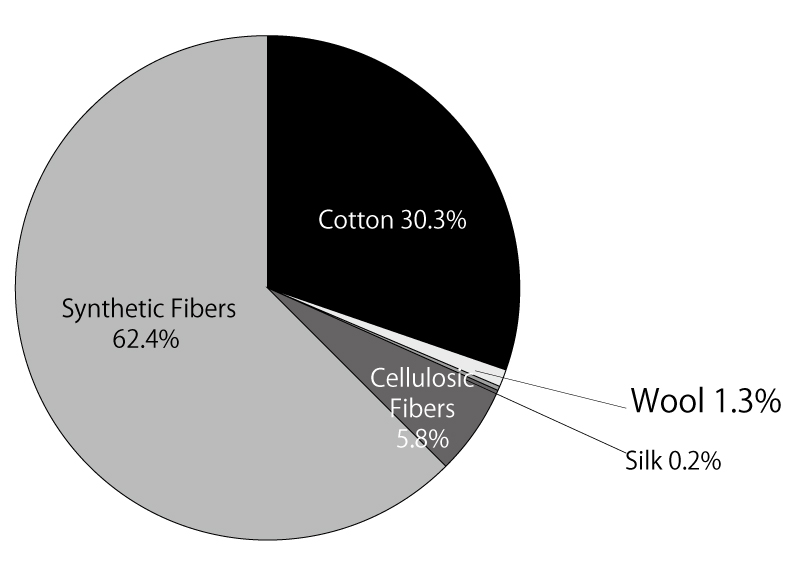
based on Japan Chemical Fibers Association, 2013
Self-sufficiency of Wool in Japan
Do we sustain this wool on our own? We do not have official data for wool self-sufficiency rates, but when we think that there are only 20 thousand sheep bred in Japan, this is surely not enough for our demand.
Not only in the case of wool, it is said that low self-sufficiency causes many troubles. First of all, it causes industry to decline . In addition, freight traffic causes a burden to the environment. And we always have to worry that if we can no longer import the item, we will lose the opportunity to consume it . There are many such problems, but one of the most serious problems of all is that people lose interest in the background of things.
This is the case in Japan, where we are taught that we should not leave even a grain of rice because farmers grow rice with great effort. When it comes to wool, how many of us consumers could explain its background and story? How it is made. Where it is made… Could any of us consumers imagine? We are consuming a gift from living animals, but it seems as if we have forgotten the real price of this and consider it as more like a man-made product that has just come out of a factory.
History of Sheep Farming in Japan
Let’s take a look at the farming conditions of sheep in Japan. Farming of sheep started in the Meiji era (1868-1912), when westernization began. The Japanese promoted a western lifestyle at this time, and the government also endorsed stock farming as part of this westernization policy. Since wool was an important material for military uniforms, the government even formed official stock raising plans for sheep. After World War 2, the government endorsed sheep farming even more. By the end of the 1950s, the number of sheep stocked in Japan rose to up to a million.

(Photography taken by the author)
However, when the period of high economic growth began in Japan, imports of wool were liberalized. Therefore, Japan was able to gain high quality wool at a low price, and the government ended its policy of promoting wool. As sheep farming declined, excess numbers of sheep were consumed as meat, and in around ten years the number of sheep declined to ten thousand. Currently, there are about twenty thousand sheep farmed in Japan, but most of these are fat stock and not for wool. Leftover wool, after the sheep have been consigned to meat, is mostly thrown away .
The Difficulty of Producing Wool that is “Made-in-Japan”
There are people who are trying to produce pure “made-in-Japan” wool, but the situation is not easy.
First of all, the species currently most stocked in Japan is Suffolk sheep, which has stiff wool, inconvenient for spinning. However, because of the climate of Japan, we cannot stock Merinos, which have soft resilient wool.
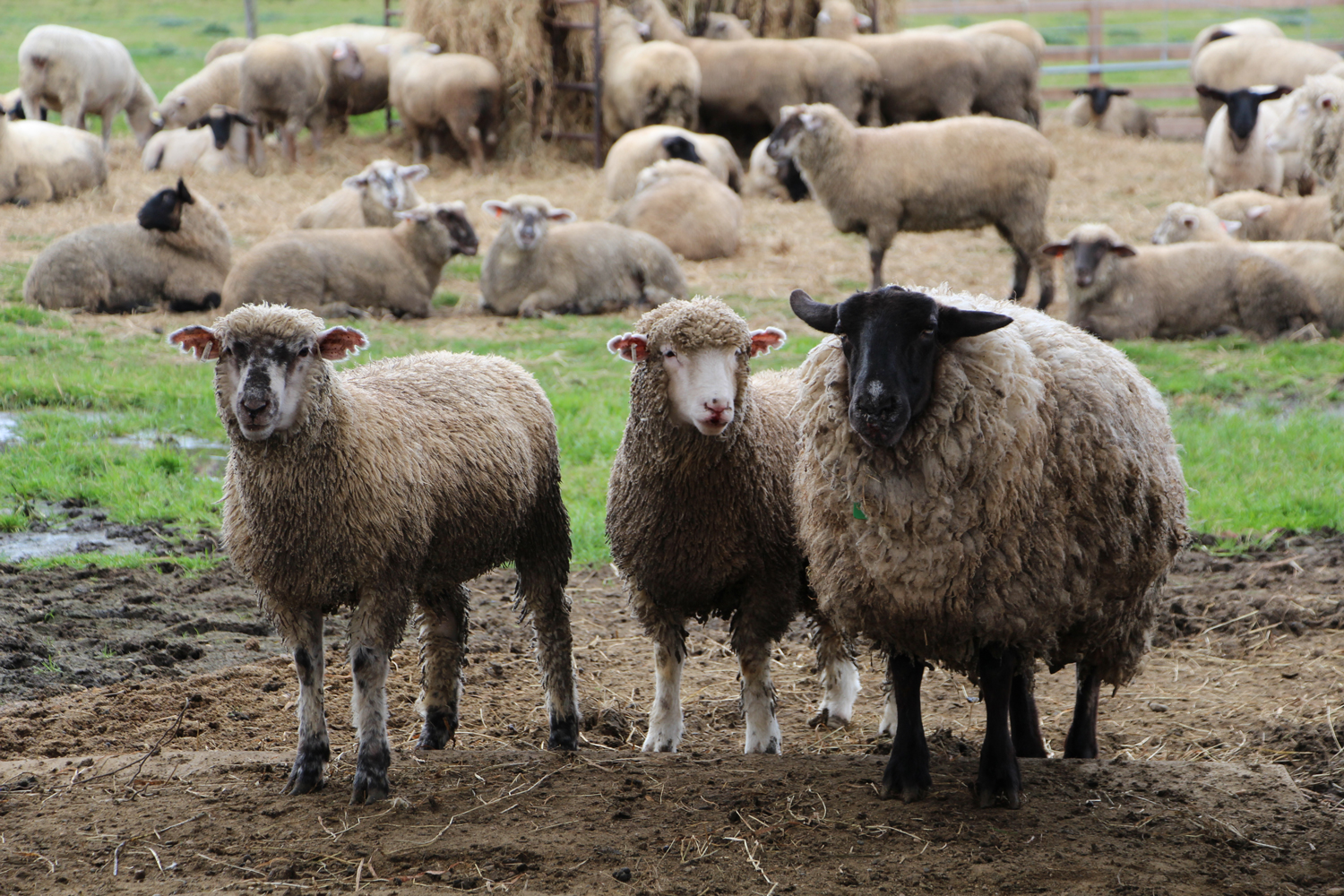
Sheep on the right is suffolk sheep (Photography taken by the author)
The next problem is a lack of processing factories. The sheared wool has to be cleaned of rubbish and dust. Normally for this process, dilute sulfuric acid is used, but due to the wastewater treatment problem most of the facilities closed down in the 1990s. Now, this process can only be done by human hands, and it is very hard to clean the wool sufficiently.
Of course, there is also the problem of cost. Producing fibers in small quantity is always costly, and the end result is stiff hard wool yarn that costs more than imported high-quality wool. Who would want to buy it?
Can “Made-in-Japan” become an Added Value?
However, if consumers cared more about domestic production and were eager to pay more so that their own country could be self-efficient in raising sheep, maybe the demand would rise and production would also increase. Then, naturally, the quality would get better as well.
Let me ask you here: are you eager to pay more for items using domestically produced wool? My answer is: “it depends on design.” If the design makes the most of the originality of “made-in-Japan” wool, if it is different from common Merino wool, and if I like it, then I am more than happy to pay for it.





